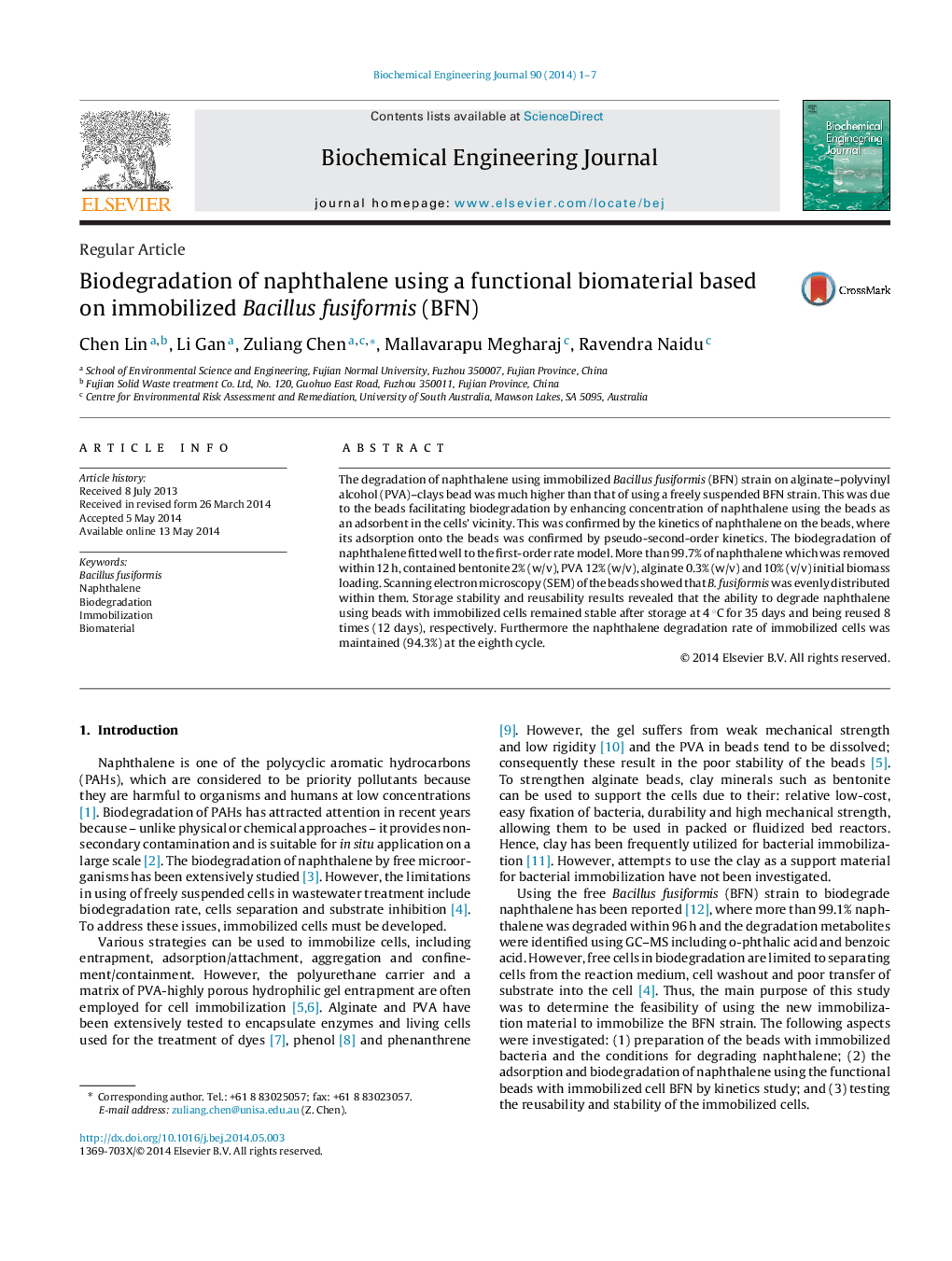| Article ID | Journal | Published Year | Pages | File Type |
|---|---|---|---|---|
| 2987 | Biochemical Engineering Journal | 2014 | 7 Pages |
•BFN cells were immobilized on beads.•Beads were used for the degradation of naphthalene.•Adsorption of naphthalene on beads favors the biodegradation.•99.8% of naphthalene was removed using beads.
The degradation of naphthalene using immobilized Bacillus fusiformis (BFN) strain on alginate–polyvinyl alcohol (PVA)–clays bead was much higher than that of using a freely suspended BFN strain. This was due to the beads facilitating biodegradation by enhancing concentration of naphthalene using the beads as an adsorbent in the cells’ vicinity. This was confirmed by the kinetics of naphthalene on the beads, where its adsorption onto the beads was confirmed by pseudo-second-order kinetics. The biodegradation of naphthalene fitted well to the first-order rate model. More than 99.7% of naphthalene which was removed within 12 h, contained bentonite 2% (w/v), PVA 12% (w/v), alginate 0.3% (w/v) and 10% (v/v) initial biomass loading. Scanning electron microscopy (SEM) of the beads showed that B. fusiformis was evenly distributed within them. Storage stability and reusability results revealed that the ability to degrade naphthalene using beads with immobilized cells remained stable after storage at 4 °C for 35 days and being reused 8 times (12 days), respectively. Furthermore the naphthalene degradation rate of immobilized cells was maintained (94.3%) at the eighth cycle.
